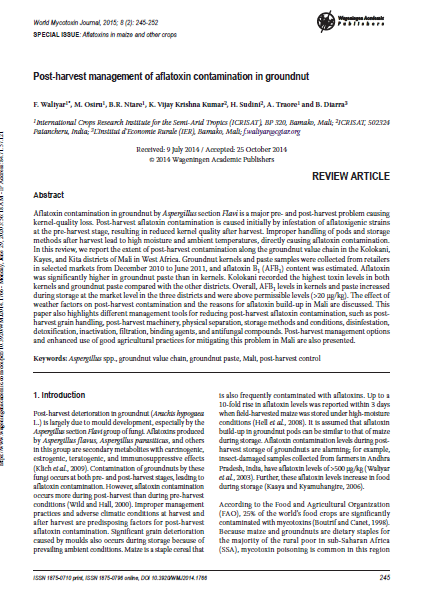Post-Harvest Management of Aflatoxin Contamination in Groundnut
Summary
Aflatoxin contamination in groundnut by Aspergillus section Flavi is a major pre- and post-harvest problem causing kernel-quality loss. Post-harvest aflatoxin contamination is caused initially by infestation of aflatoxigenic strains at the pre-harvest stage, resulting in reduced kernel quality after harvest. Improper handling of pods and storage methods after harvest lead to high moisture and ambient temperatures, directly causing aflatoxin contamination. In this review, we report the extent of post-harvest contamination along the groundnut value chain in the Kolokani, Kayes, and Kita districts of Mali in West Africa. Groundnut kernels and paste samples were collected from retailers in selected markets from December 2010 to June 2011, and aflatoxin B1 (AFB1) content was estimated. Aflatoxin was significantly higher in groundnut paste than in kernels. Kolokani recorded the highest toxin levels in both kernels and groundnut paste compared with the other districts. Overall, AFB1 levels in kernels and paste increased during storage at the market level in the three districts and were above permissible levels (≯20 μg/kg). The effect of weather factors on post-harvest contamination and the reasons for aflatoxin build-up in Mali are discussed. This paper also highlights different management tools for reducing post-harvest aflatoxin contamination, such as post-harvest grain handling, post-harvest machinery, physical separation, storage methods and conditions, disinfestation, detoxification, inactivation, filtration, binding agents, and antifungal compounds. Post-harvest management options and enhanced use of good agricultural practices for mitigating this problem in Mali are also presented.
Open resource Download resource Access resource on external site

